Flamingos Return to Cozumel’s Punta Sur: Encouraging Numbers
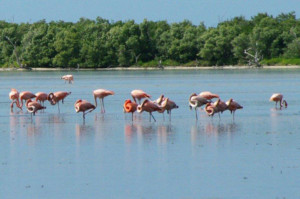
Recently the FPMC (Foundation of Parks & Musems Cozumel) announced that their most recent survey registered the pink flamingo colony at 25 members.
Biologists and birdwatchers can rejoice at this news. It’s a very encouraging sign that the efforts put forth by the FPMC, and various volunteers, to restore the mangrove system – specificially in the Chunchacaab area – have been working.
The colony includes both juvenile and adult flamingos which is again positive, since it means that the birds have been here year round. Additionally one member of the colony is tagged with a Rio Largatos 2016 marker, meaning they’ve crossed over from the Yucatan Peninsula, where they are also endemic.
The mangroves in the Punta Sur area were damaged by hurricanes and winter storms. The last flamingo colony was reported in Colombia lagoon in 2015, and before that flamingos – which once were indigenous to Cozumel – were not reported after 2005.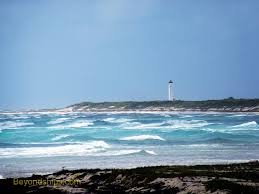
Flamingos are large wading birds that like to nest in muddy islets and are found throughout the Yucatan Peninsula. Their breeding season is from May through August.
Flamingo eggs take about a month for incubation and are cared for by both the male and the female. Flamingos have one of the longest life spans of all birds and live approximately 40 years.
Regresan los flamencos a Punta Sur en Cozumel. Las cifras son alentadoras
Hace poco la Fundación de Parques y Museos de Cozumel (FPMC) dio a conocer que sus estudios más recientes mostraban una colonia de flamencos conformada por 25 miembros.
Tanto los biólogos como los observadores de aves pueden alegrarse con esta noticia. Es muy alentador ver que han funcionado los esfuerzos de la FPMC y de diversos voluntarios para restaurar el sistema de manglares, particularmente el área de Chunchacaab.
La colonia está formada tanto de flamencos juveniles como adultos, lo cual es positivo pues significa que las aves han estado aquí todo el año. Además, uno de los miembros de la colonia porta una marca de Río Lagartos 2016, lo que significa que han cruzado desde la Península de Yucatán de donde también son endémicos.
Los manglares en Punta Sur fueron dañados por los huracanes y las tormentas de invierno. La última colonia de flamencos de la cual se tiene información se encontraba en la Laguna de Colombia en el 2015; y antes de eso, a partir del 2005 no se tienen reportes de flamencos, que en algún momento fueran endémicos de Cozumel.
Los flamencos son aves zancudas a las cuales les gusta anidar en los islotes lodosos y se las puede encontrar por toda la Península de Yucatán. La época de apareamiento es Mayo a Agosto.
La incubación de los huevos de flamenco tarda un mes y el cuidado de éstos recae tanto en el macho como en la hembra. Entre todas las aves, la duración de vida de los flamencos es de las más largas ya que viven aproximadamente 40 años.
______________________________
Una ex yanqui de Connecticut quien llama hogar a Cozumel desde hace más de 15 años. Laura escapó al Caribe hace años, desplazándose de una isla a otra dando clases de BUCEO. Se dedicó a perder el tiempo en Jamaica y finalmente se detuvo en Cozumel para pasar unas vacaciones de 2 semanas que aún no terminan. Convenciendo a sus padres que pagaran una elegante universidad privada, obtuvo su título en Periodismo y Laura crea semanalmente Cozumel 4You, medios sociales y artículos promocionales sobre la Isla y también es moderadora en el grupo Cozumel 4 You en Facebook que actualmente cuenta con 25,000 miembros. Fabián, s umuy tolerante marido, desde hace mucho tiempo se resignó a no tener vida privada, pues se ha visto implicado en los diversos proyectos y planes que urde Laura. Son orgullosos padres de diversos perros y gatos rescatados. Mientras contempla su paso a través de la vida en el Caribe mexicano,Laura continúa siendo la pesadilla en la existencia de su muy tradicional suegra mexicana.
- Cozumel RCCL Beach Public - December 19, 2025
- Cozumel 4 You NEWS December 19, 2025 - December 18, 2025
- 10 Experiences Tour Cozumel Romeritos Christmas - December 18, 2025
An ex-Connecticut Yankee who has called Cozumel home for over 18 years, Laura ran away to the Caribbean years ago, bumped around the islands teaching SCUBA diving, lost some time in Jamaica, and finally stopped in Cozumel for a 2 week vacation that hasn’t ended yet. With a degree in Journalism from a fancy private college she convinced her parents to pay for, Laura writes, edits, and creates the weekly Cozumel 4 You news, social media, and promotional articles about the island, as well as moderates the Cozumel 4 You Facebook group, which currently has over 25,000 members. Her long suffering husband, Fabian, has long since resigned himself to having zero private life, as he’s been involved in her various schemes and plots since his arrival. Proud parents to a variety of rescue dogs and cats, Laura continues to be the bane of her traditional Mexican mother-in-law’s existence, as she muses her way through life in the Mexican Caribbean. ______________________________ Una ex yanqui de Connecticut quien llama hogar a Cozumel desde hace más de 15 años. Laura escapó al Caribe hace años, desplazándose de una isla a otra dando clases de BUCEO. Se dedicó a perder el tiempo en Jamaica y finalmente se detuvo en Cozumel para pasar unas vacaciones de 2 semanas que aún no terminan. Convenciendo a sus padres que pagaran una elegante universidad privada, obtuvo su título en Periodismo y Laura crea semanalmente Cozumel 4You, medios sociales y artículos promocionales sobre la Isla y también es moderadora en el grupo Cozumel 4 You en Facebook que actualmente cuenta con 25,000 miembros. Fabián, s umuy tolerante marido, desde hace mucho tiempo se resignó a no tener vida privada, pues se ha visto implicado en los diversos proyectos y planes que urde Laura. Son orgullosos padres de diversos perros y gatos rescatados. Mientras contempla su paso a través de la vida en el Caribe mexicano, Laura continúa siendo la pesadilla en la existencia de su muy tradicional suegra mexicana.
Cozumel Hurricane Season 2025
Cozumel & Quintana Roo Finish 2025 Hurricane Season Without Incident As the...
ByLaura WilkinsonNovember 28, 2019Cozumel Nurse Sharks Mating
Love in the Shallows: Nurse Sharks Put On a Rare Late Season...
ByLaura WilkinsonNovember 28, 2019Cozumel Birdwatching Peak Time
Cozumel Welcomes 100+ Migratory Bird Species As Cold Fronts Usher In Peak...
ByLaura WilkinsonNovember 28, 2019Cozumel Flamboyana Trees
Cozumel Flamboyana Trees Bloom Flamboyana Trees: Cozumel tradition The Flamboyana trees in...
ByLaura WilkinsonNovember 28, 2019

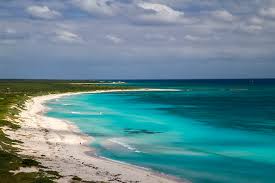
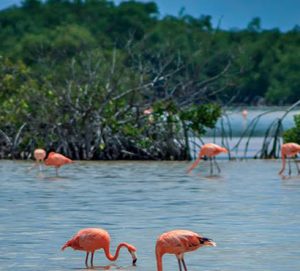




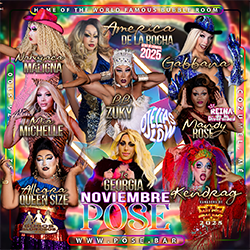
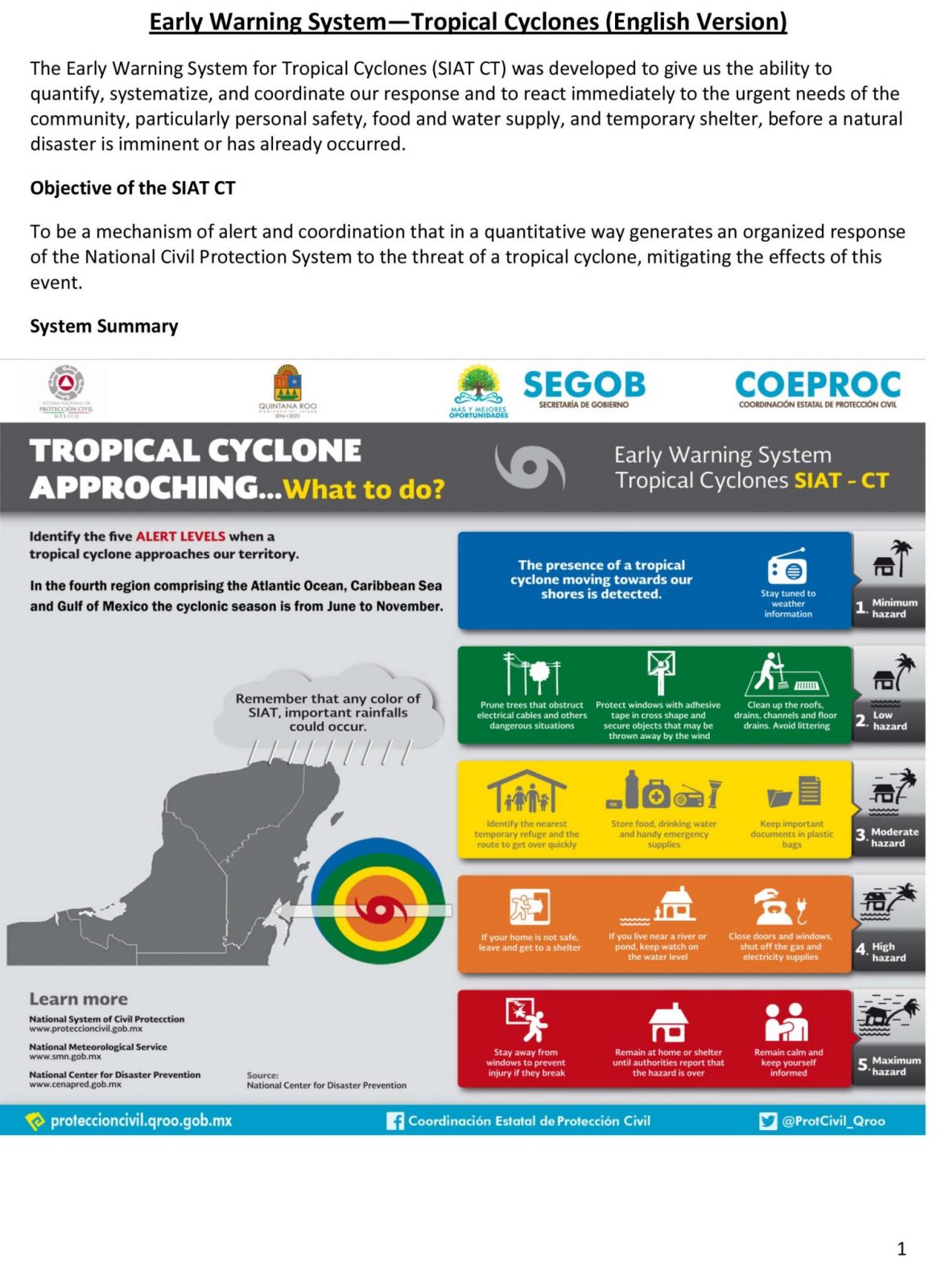
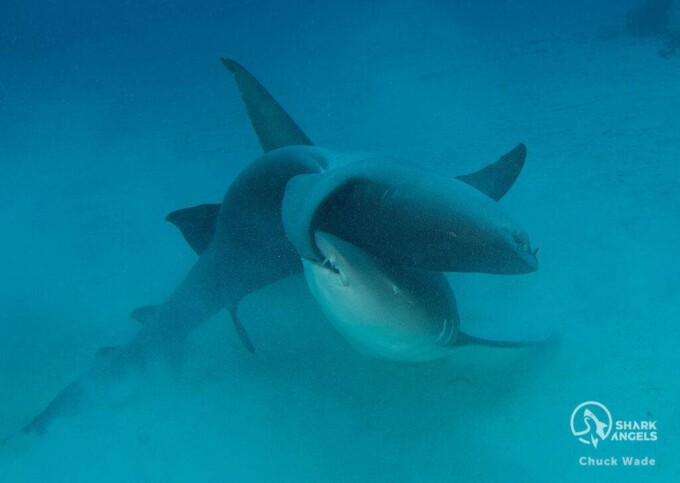
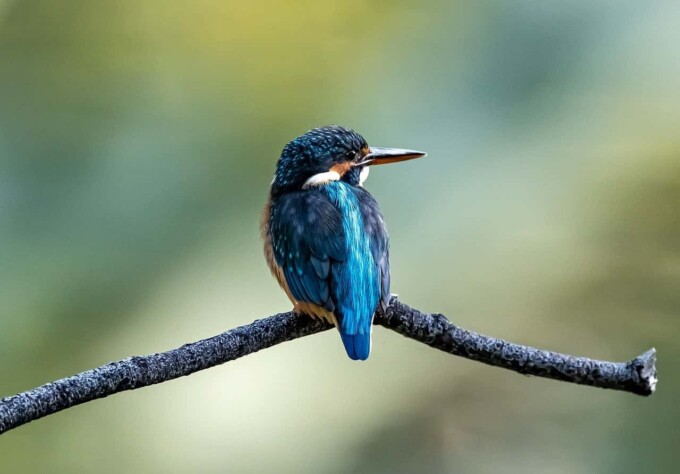
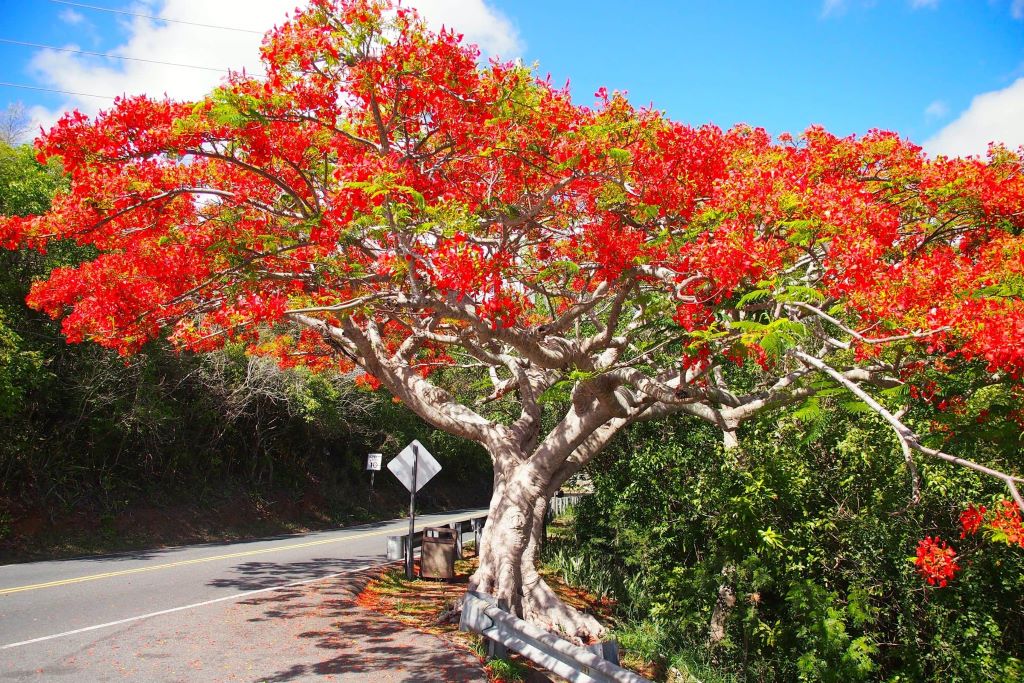









Leave a comment